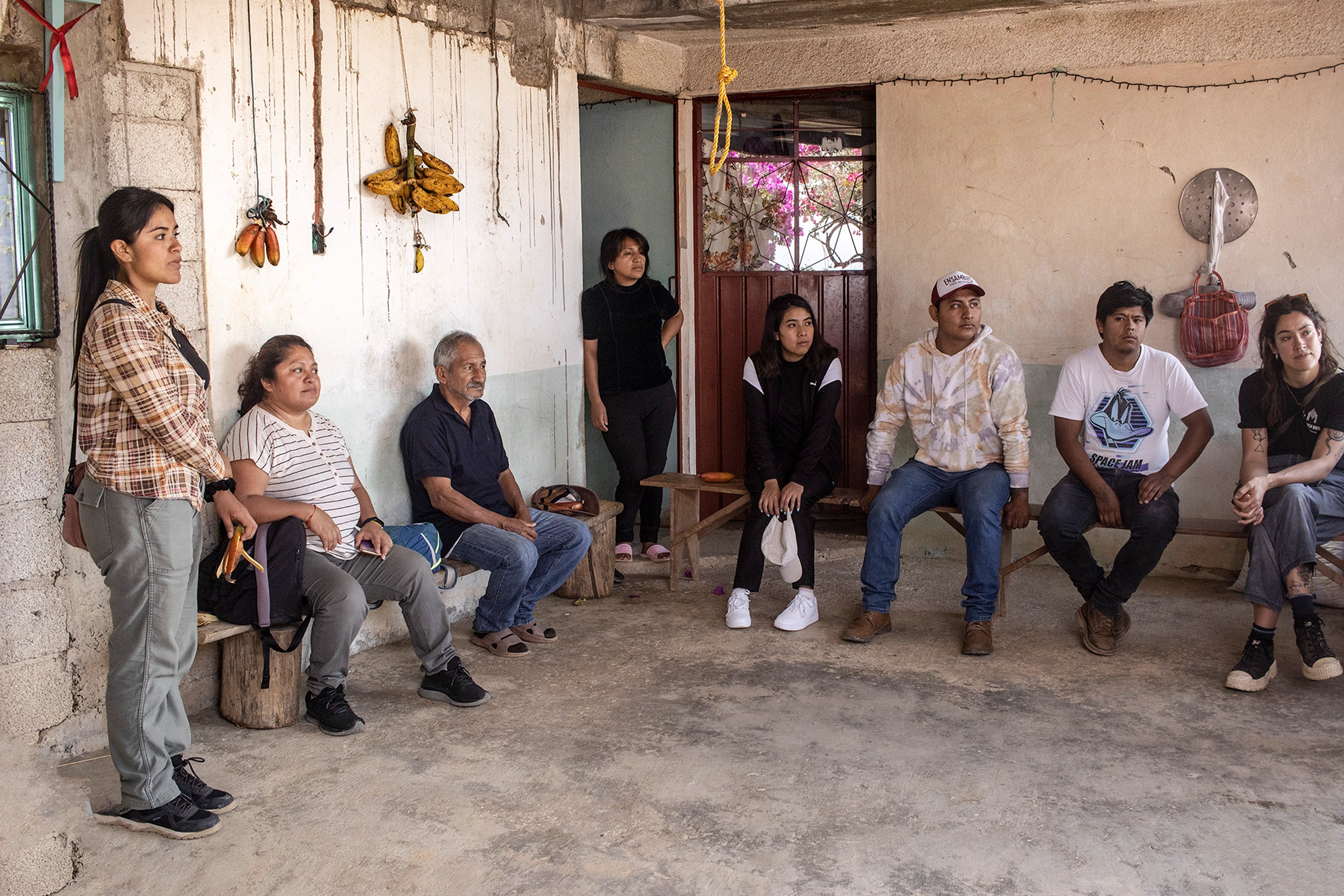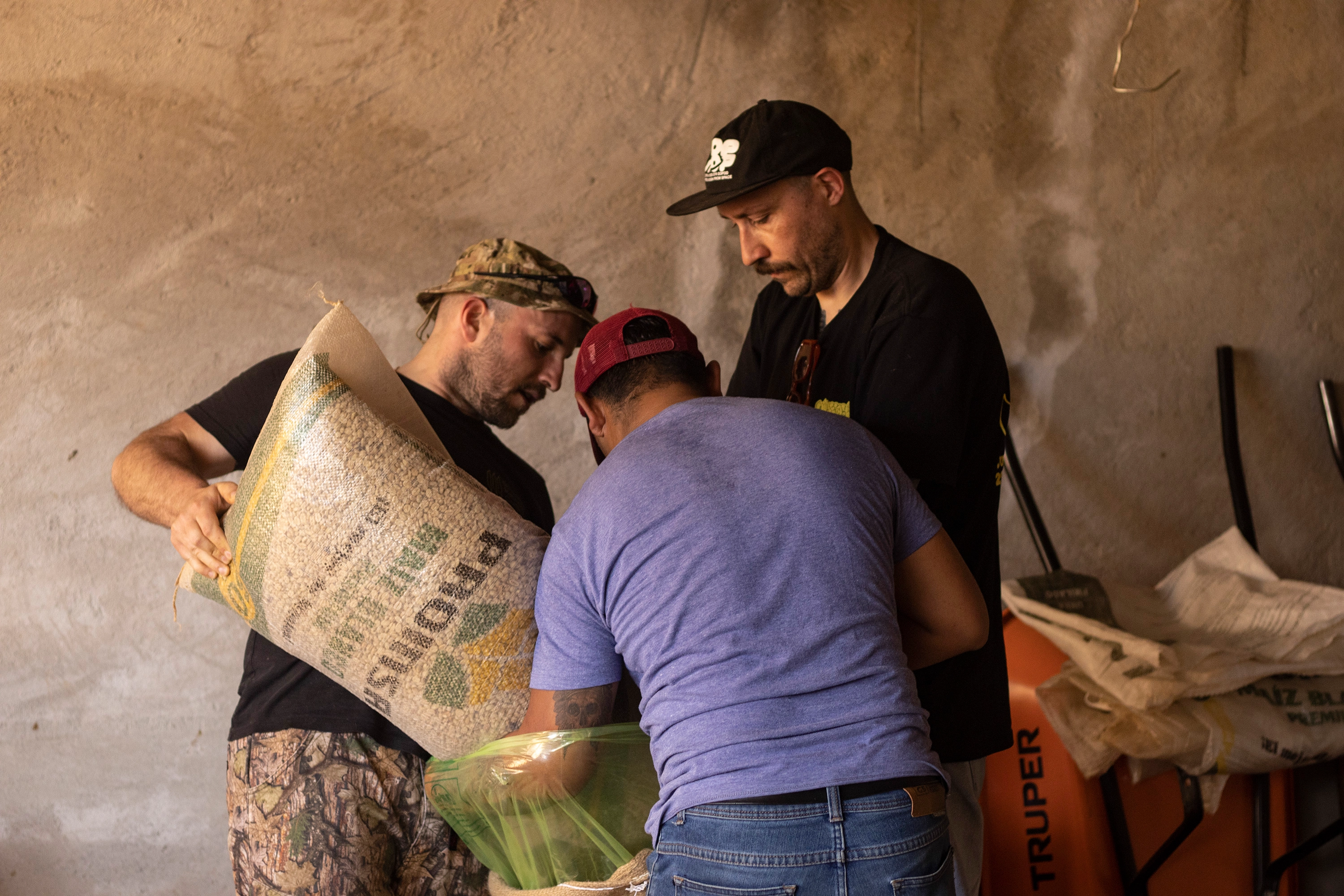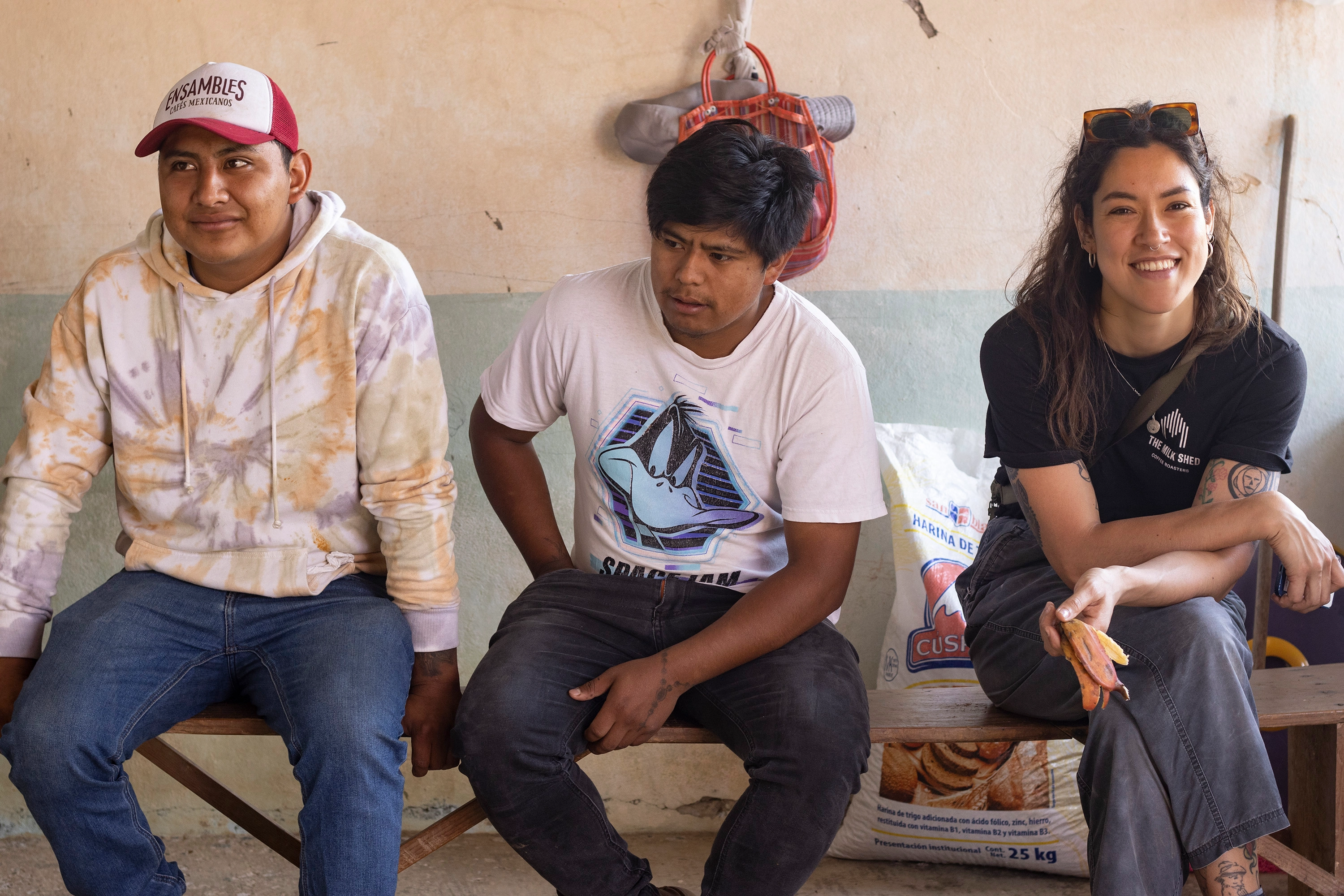Trip to Origin: Between the Mist of Oaxaca and the Desert of Guerrero
- ECM - UK

- May 15, 2024
- 5 min read
For us, the gap between the countryside and other sectors of the coffee industry doesn't exist. We work hard to make connections between these different worlds possible.
That's why earlier this year, we extended an invitation to our clients from Europe and the UK to join us in adventure to two origins: Sierra Mazateca, located in Oaxaca, and Montaña Alta, in Guerrero.
We have implemented impactful projects in both origins, and we want our roaster partners who support these initiatives to connect more closely with the producers and know their stories. But this is also an opportunity to learn about production systems, and the social, economic, and environmental contexts in which they operate. We believe that this is the only way to bridge the gap between the different players of the industry.
Jamie Strachan from Dark Arts Coffee, Haris Gkikas from Catalyst Coffee, Siala Farani-Tomlin from Milk Shed Coffee Roasters, and Mark Chislett from Method Coffee Roasters ventured on this epic journey to the roots of coffee in Guerrero and Oaxaca.
Below is a summary of this expedition that began on April 22 and ended on April 29.

One part
Wrapped in Mist
We were looking forward to discovering the first destination. During the 266 kilometres on the road from Puebla to Huautla, landscapes were changing drastically. We went from the most desert-like to the most populated areas, with valleys and Jurassic mountains, which were often covered in ´nieblina´(mist).

After six hours of contemplation and daydreaming, we arrived at the Sierra de Flores Magón (formerly known as La Cañada), more precisely in the municipality of Huautla de Jiménez. located in the northern part of the state of Oaxaca. There, it seems that time stops, and its everyday bustling life offers the best postcards of the region.
The Oaxaca team, made up of Concepción Ortiz, Head of QC and Q-Grader; Osiris Martínez, Oaxaca´s Field Coordinator; Pavel Obed, community promoter; Jennifer Canseco, laboratory assistant; Moisés Herrera, warehouse assistant, and Aissatou Diallo, our UK & Europe Sales Director from the UK and Europe, welcomed the guests warmly.

We couldn't waste time, so we immediately headed to Maricela Esperón and her family´s house. Dusk was setting in, the mist was thick, and the aftermath of the recent rain and cold made everyone put some more layers on to keep warm.
At Esperón's house, the atmosphere was familiar. Maricela, her mother, Macaria Dorantes, and her father, Miguel Esperón, welcomed us with steak and potatoes in guajillo sauce; a typical delicacy of the region. The Mazatec producer gave us a small tour of her house to see the drying, storage, and roasting area. We ended the night sharing a cup of coffee harvested, processed and roasted by Maricela herself.
Day 2
Our second stop was the Cervantes Rubio family farm, located in the town of Loma Alta, 54 minutes drive from downtown Huautla. In their home, we met with more producers from the area who wanted to meet our guests and expose their challenges growing coffee. Some took advantage of the visit to deliver their coffee to sell; a logistical task led by Osiris, Pavel, and Moisés, the strong arms of the team. We ended the day at the family table sharing tamales and fresh hibiscus and lemon waters, made by Doña Rosa.
Day 3
This was the day to taste the coffees produced in the region. The cupping was set in the local laboratory, located in the collection warehouse. The objective was to cup fresh crop offers, learn about the different cup profiles of the region, and participate in the daily operations of the warehouse.
This concluded our stay in Huautla.
Two part
The Unexplored Guerrero
We hit the road again, eager to discover Guerrero, a region often better known for its illegal activities, security problems, and poverty, than for its coffee production (accounting for 3.9% of the national production). However, our mission to show this other side of the region led us to travel another 500 kilometres (more than 8 hours) to reach the Montaña Alta in Guerrero. Unlike the North of Oaxaca, the landscape of the southern state is dominated by dry deciduous forests or dry jungle.

Our first destination was the town of Ojo de Agua, where our Guerrero project began over 7 years ago, under the leadership of Miguel Guevara, Director of Operations at Ensambles Cafés Mexicanos. We were greeted by some producers from the Las Guerreras group, who cooked a delicious pozole banquet, a typical dish of the region.

Each customer had the opportunity to introduce themselves, with some producers speaking in their native Me'phaa language to thank us for our visit and bless the food. Then, we made our way to the farm of one the producers from the area. Miguel took this opportunity to explain to us the five different agroforestry production systems used in Mexican coffee growing.

This year, we set up a mobile laboratory in this community in order to analyse all the coffees sourced, and identify the most attractive profiles for the consuming market. Several customers recognized the great potential of the region for producing good specialty coffees.
Iliatenco
The municipality of Iliatenco was another key stop on our map, as we have more than 100 allied producers in the area. We were again warmly welcomed with pozole to start our meeting, followed by a long conversation with the coffee growers. They shared with us the challenges they face regarding prices, profitability, and yields. Logistics were handled by Rebeca Oropeza, Field Technician in Guerrero. We finished the day with a visit to the beautiful Pachili waterfall. Pachilii means "Swallow" in the Me'phaa indigenous language, and is the name we have given to one of our coffee lots sourced in the region.
Colombia de Guadalupe
One of the coffees that stood out on the fresh crop cupping table comes from Colombia de Guadalupe, a small town in the Montaña Alta. Behind this great coffee are husband Gaudencio Carranza and wife Francisca Mejia Barrera. In this area, honey production as well as a variety of foods and spices are also prominent.
It took us over an hour to reach the family farm, but it was worth it. We discovered production methods which were very different from what we are accustomed to. This 27-hectare farm is a true agricultural pantry, demonstrating the importance of diversification in coffee growing, but also a beautiful example of agroforestry and conservation of a biodiversity-rich environment.

We were lucky to end this small expedition with a feast prepared by Doña Francisca with different typical foods of the region, all produced on their farm, showcasing the incredibly rich culinary and cultural heritage of the area.

Our journey revealed a different face of Guerrero, where coffee growing is transforming lives and offering new opportunities to the Guerrense people.

























Comments